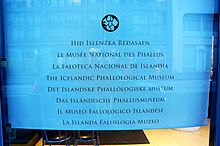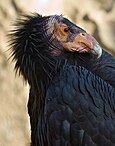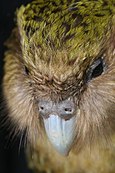主題:動物/精選條目
Instructions[編輯]
The layout design for these subpages is at Portal:動物/精選條目/排版.
- Add a new Selected article to the next available subpage.
- The list should only contain articles that have been given a quality rating of Good Articles.
- The "blurb" for all Selected articles should be approximately 8 lines, for appropriate formatting in the portal main page.
- Update "max=" to new total for its {{Random portal component}} on the main page.
Selected articles list[編輯]
卡爾·馮·林奈(瑞典語:Carl von Linné,1707年5月23日—1778年1月10日),過去曾譯成林内,受封貴族前名為卡爾·林奈烏斯(Carl Linnaeus),由於瑞典學者階層的姓常拉丁化,又作卡羅盧斯·林奈烏斯(拉丁語:Carolus Linnaeus),瑞典植物學家、動物學家和醫生,瑞典科學院創始人之一併擔任第一任主席。他奠定了現代生物學命名法二名法的基礎,是現代生物分類學之父,也被認為是現代生態學之父之一。他的很多著作使用拉丁文撰寫,他的名字在拉丁語中是Carolus Linnæus(在1761年之後為Carolus a Linné)。
1707年,林奈出生於瑞典南部斯莫蘭的一個小鄉村里。林奈在烏普薩拉大學接受了大部分的高等教育,並在1730年開始教授植物學。1735年至1738年之間,他居住在國外和做研究。他在荷蘭出版了第一版的《自然系統》(Systema Naturae)。之後,他回到瑞典的烏普薩拉,擔任了醫學和植物學教授。在1740年代,他旅行遍及瑞典各地,搜集和分類各種植物和動物。在1750年代和1760年代,他繼續搜集和分類各種動植物,並將成果出版了好幾卷。當他逝世的時候,他已經是歐洲最受讚譽的科學家之一。
瑞士哲學家盧梭在給林奈的信中寫到「告訴他我知道地球上沒有人比他更偉大」。德國學者歌德寫過:「除了莎士比亞和斯賓諾莎,再沒有其他的先人對我的影響比林奈更強。」 除了這些讚譽,林奈還被稱為「植物學王子」,「北方的博物志」,以及「第二個亞當」。
在植物學中,用L.來作為表明林奈的作者權的作者名縮寫。在一些較老得出版物中,有時林奈的作者名縮寫為「Linn.」。
- Carl Linnaeus ( 23 May 1707 – 10 January 1778) was a Swedish botanist, physician, and zoologist, who laid the foundations for the modern biological naming scheme of binomial nomenclature. He is known as the father of modern taxonomy, and is also considered one of the fathers of modern ecology. Linnaeus was born in the countryside of Småland, in southern Sweden. He received most of his higher education at Uppsala University, and began giving lectures in botany there in 1730. He lived abroad between 1735 and 1738, where he studied and also published a first edition of his Systema Naturae in the Netherlands. He then returned to Sweden, where he became professor of medicine and botany at Uppsala. In the 1740s, he was sent on several journeys through Sweden to find and classify plants and animals. In the 1750s and '60s, he continued to collect and classify animals, plants, and minerals, and published several volumes. At the time of his death, he was one of the most acclaimed scientists in Europe.
加州神鷲(學名:Gymnogyps californianus)屬於美洲鷲科新大陸禿鷲家族,為北美洲大陸最大的鳥類。如今這種鷲只生活在科羅拉多大峽谷區域以及加利福尼亞州和下加利福尼亞州北部西海岸的群山中。牠是加州兀鷲屬中唯一存活的物種。
加州神鷲是一種大型黑色的禿鷲,翅膀下面有白色的小塊,頭部禿毛,根據其情緒的不同,顯露的皮膚顏色為微黃色到鮮紅色。在所有北美洲的鳥類中其翼幅最寬,同時也是最重的鳥類之一。加州神鷲是食腐動物,吃大量的腐肉。牠是世界上壽命最長的鳥類之一,其壽命可達50年。
19世紀以來,由於非法狩獵、鉛中毒和棲息地破壞,加州神鷲的數量急遽減少。最終,美國於1987年執行了一項自然保護運動計劃,捕獲了所有存活的野生加州神鷲,總計22隻鳥被豢養在聖地牙哥野生動物園和洛杉磯動物園。從1991年起,數量開始有所增長,加州神鷲又被重新放歸山林。這項工程是美國迄今以來最昂貴的物種保護工程。加州神鷲是世界上最稀少的鳥類之一。到2008年12月,據統計只剩有327隻存活的加州神鷲,其中半數以上為野生。[1]
加州神鷲對於很多加州印第安人的文化具有重要意義,作為一個重要角色出現在一些傳統的美國原住民神話中。
The California condor (Gymnogyps californianus) is a New World vulture, the largest North American land bird. This condor became extinct in the wild in 1987 (all remaining wild individuals were captured), but the species has been reintroduced to northern Arizona and southern Utah (including the Grand Canyon area and Zion National Park), the coastal mountains of central and southern California, and northern Baja California. Although other fossil members are known, it is the only surviving member of the genus Gymnogyps. The species is listed as critically endangered by the IUCN.
The plumage is black with patches of white on the underside of the wings; the head is largely bald, with skin color ranging from gray on young birds to yellow and bright orange on breeding adults. Its huge 3.0米(9.8英尺) wingspan is the widest of any North American bird, and its weight of up to 12公斤(26磅) nearly equals that of the trumpeter swan, the heaviest among native North American bird species. The condor is a scavenger and eats large amounts of carrion. It is one of the world's longest-living birds, with a lifespan of up to 60 years.[2]
Condor numbers dramatically declined in the 20th century due to poaching, lead poisoning, and habitat destruction.[3] A conservation plan was put in place by the United States government that led to the capture of all the remaining wild condors which was completed in 1987, with a total population of 27 individuals.[4] These surviving birds were bred at the San Diego Wild Animal Park and the Los Angeles Zoo. Numbers rose through captive breeding and, beginning in 1991, condors were reintroduced into the wild. The California condor is one of the world's rarest bird species: as of December 2015 there are 435 condors living wild or in captivity.[5]
The condor is a significant bird to many Californian Native American groups and plays an important role in several of their traditional myths.
多孔動物門(學名:Porifera)為原始的多細胞生物,也稱海綿動物門(Spongiatia或Spongia),一般稱為海綿。海綿沒有神經、消化和循環系統,相反,它們大多依靠海水流過自己的身體來獲得食物和氧氣並消除廢物,就像海底中的濾水器。
由於形狀像植物,而且根植在海底中,所以海綿千百年來都被認為是植物,但後來發現它們幾乎具備所有最基本的動物特徵,所以到十九世紀中期才被歸入動物界裡頭。但近期基於基因組資訊與系統發生學的更多證據,所以應否把它們保留在動物界還是獨立出來自成一個界別的論點在生物學界仍在不斷討論中。
Sponges are animals of the phylum Porifera (meaning "pore bearer"). They are multicellular organisms that have bodies full of pores and channels allowing water to circulate through them, consisting of jelly-like mesohyl sandwiched between two thin layers of cells. Sponges have unspecialized cells that can transform into other types and that often migrate between the main cell layers and the mesohyl in the process. Sponges do not have nervous, digestive or circulatory systems. Instead, most rely on maintaining a constant water flow through their bodies to obtain food and oxygen and to remove wastes.
內肛動物門(學名:Entoprocta)是動物界的一個門。分類上曾一度把牠們與外肛動物門合稱為苔蘚動物門(Bryozoa)。後來發現內肛動物為假體腔動物,而外肛動物為真體腔動物,現行分類已將這兩類動物獨立成門。內肛動物大約有150多種,絕大多數體型不超過5mm。 內肛動物門,水生無脊椎動物,分布於全世界,主要見於海洋生境。有少數生活於淡水。內肛動物為單體或通過出芽方式形成相互交通的群體;其中,每個個體稱為個員,高僅0.4~0.5毫米,有一條柄,可以互相結合,柄可附著在貝殼、海草或其他會產生水流的動物,如海綿、苔蘚動物、水螅和環節動物上。身上有一個球狀的頭部(萼),其中包容一個U形的消化道以及神經、排泄和生殖系統。具纖毛的觸手排成冠狀,用以產生水流,將食物顆粒送入位於中央的口部。營群體生活的各類常將萼總拋棄,然後再生。營單體生活的種類可以生出子芽,子芽成熟後脫離母體。雖然內肛動物的幼體及其早期發育方式表明內肛動物可能與環節動物和與環節動物近緣的門有遙遠的親緣關係,但無證據表明內肛動物與任何門的動物為近緣。
Entoprocta is a phylum of mostly sessile aquatic animals, ranging from 0.1 to 7 millimetres (0.0039 to 0.28 in) long. Mature individuals are goblet-shaped, on relatively long stalks. They have a "crown" of solid tentacles whose cilia generate water currents that draw food particles towards the mouth, and both the mouth and anus lie inside the "crown". The superficially similar Bryozoa (Ectoprocta) have the anus outside a "crown" of hollow tentacles. Most families of entoprocts are colonial, and all but 2 of the 150 species are marine. A few solitary species can move slowly. Some species eject unfertilized ova into the water while others keep their ova in brood chambers until they hatch, and some of these species use placenta-like organs to nourish the developing eggs. After hatching, the larvae swim for a short time and then settle on a surface. There they metamorphose, and the larval gut generally rotates by up to 180°, so that the mouth and anus face upwards. Both colonial and solitary species also reproduce by cloning — solitary species grow clones in the space between the tentacles and then release them when developed, while colonial ones produce new members from the stalks or from corridor-like stolons. Some species of nudibranchs ("sea slugs") and turbellarian flatworms prey on entoprocts. A few entoproct species have been found living in close association with other animals. It is uncertain whether any are invasive species.
北極燕鷗(學名:Sterna paradisaea、arctic tern)是屬於燕鷗科的一種海鳥。分佈於北極及附近地區,並於北極、歐洲、亞洲和北美洲靠近北極的地方進行繁殖。北極燕鷗是候鳥,每年經歷兩個夏季,從其北部的繁殖區南遷至南極洲附近的海洋,之後再北遷回繁殖區(約24,000英里),這是已知的動物中遷徙路線最長的。
北極燕鷗體型中等,一般長33到39公分,翼展76到85公分。其羽毛主要呈灰色與白色,喙和兩腳呈紅色,前額呈白色,頭頂和頸背呈黑色,腮幫子呈白色。其灰色翅膀為305毫米,肩羽帶棕色。上面的冀背呈灰色,帶白色羽緣,頸部呈純白色,其帶灰色羽瓣的叉狀尾部亦然。其後面的耳覆羽呈黑色。
北極燕鷗只會照料和保護小部分的幼鳥。成體會長期養牠們的幼鳥,並幫助牠們飛往南方過冬。北極燕鷗壽命很長,大部分可活上20年。牠們主要吃魚和水生的無脊椎動物。此物種數量很多,約為一百萬個個體。
狐獴是一種小型晝行性動物,雄性平均重約731克,雌性720克,有著修長的軀幹跟四肢,使牠們的身長可達到25到35公分,尾長亦有17-25公分。牠的尾巴(並不如其他的獴類那樣一叢)為長、細,並尖尖延伸到端點,在末端的端點都為黑色,在直立時狐獴會用尾巴支撐來保持平衡,牠們的臉型也是尖尖延伸到棕色的鼻子,狐獴的眼睛周圍都有著黑色塊,這些構造的作用跟太陽眼鏡相同,讓牠們在艷陽普照下仍能清晰的視物,甚至是直視太陽,這對狐獴幫助很大,因為空中的掠食者通常是在太陽之前飛行以避免被察覺。狐獴有著小、黑、新月型的耳朵,有著在挖洞時能閉起來以避免砂進入耳內的功能。 狐獴有著有力、2公分長、彎曲的爪子,可用來挖洞獵食和調整牠們的地底洞穴,牠們在每隻腳上有四根腳趾和長細的肢體。毛皮的顏色通常是淺黃棕色參雜著灰、古銅或微帶銀的棕色,牠們有著短平行的條紋橫過牠們的背,這些條紋從尾巴的基部延伸到肩且每隻皆不同。狐獴的身體下部沒有花樣,但在腹部只有稀疏覆體的毛,並露出底下的黑色皮膚,當牠們用後腳站立時,狐獴利用腹部這塊黑色區域吸收太陽的熱,這通常是牠們在寒冷的沙漠夜晚之後晨間做的第一件事以弄暖身體。 狐獴的主要以昆蟲為食,但牠們也會吃蜥蜴、蛇、蜘蛛、植物、卵跟小型哺乳動物。就如其他獴一樣,狐獴發展出對許多的毒免疫,這使牠們可以吃蠍子(包括刺)跟有些蛇而不至於導致不適、中毒或死亡。牠們體內沒有儲存脂肪,所以如果牠們沒有每天覓食就會餓死。
玳瑁(學名:Eretmochelys imbricata)是屬於海龜科的一種海龜,是玳瑁屬下唯一一種,又名瑇瑁、蝳蝐、瑇玳、文甲、鷹嘴海龜、十三鯪龜、十三鱗、十三棱龜、明玳瑁、千年龜,簡稱玳[6],分為太平洋玳瑁(Eretmochelys imbricata bissa)和大西洋玳瑁(Eretmochelys imbricata imbricata)兩個亞種。此物種分布非常廣泛,其中太平洋玳瑁分布於印度洋-太平洋海域,大西洋玳瑁分布於大西洋中[7]。該物種的模式產地在美洲和亞洲的海域[8]。
玳瑁的外形與其他海龜大致相似,都有扁平的軀體、保護性的背甲、以及適於划水的槳狀鰭足,而玳瑁最明顯的特點是其鷹喙般的嘴,以及軀體後部鋸齒般的緣盾。雖然玳瑁分布在廣大的海域中,其最主要的生活區是淺水礁湖和珊瑚礁區,珊瑚礁中的許多洞穴和深谷給它提供休息的地方,珊瑚礁中還生活著玳瑁最主要的食物——海綿。這些海綿中的部分物種對於其他生物來說是劇毒且致命的,所以玳瑁肉中往往會含有致人死亡的高毒性物質;且由於海綿中通常含有大量二氧化矽(玻璃的主要原料之一),因此玳瑁是屈指可數的能夠消化玻璃的動物之一,也是唯一能消化玻璃的海龜。玳瑁的食物還包括櫛水母、水母、海葵、蝦蟹和貝類等無脊椎動物以及魚類和海藻[9]。
玳瑁的甲殼上有美麗而又色彩斑斕的花紋,是一種名貴的寶石,可作為首飾、雕塑等飾品的原材料,高貴典雅,有祥瑞幸福、健康長壽的象徵,享有「海金」之稱。玳瑁工藝在中國已有上千年的歷史,工藝水平在唐代已達頂峰,日本的玳瑁工藝也受到了中國很大的影響。正是由於人類對玳瑁的過度需求,導致玳瑁在世界範圍內的數量持續減少,已有滅絕的危險,目前兩個玳瑁亞種的保護現狀均已被世界自然保護聯盟(IUCN)評為極危狀態[10]。一些國家,如中國和日本,常會獵取玳瑁、挖其巢穴以食用它的肉和蛋,因為玳瑁的肉蛋很美味,甲殼可入中藥,因此玳瑁的保護有很大困難。目前玳瑁受到《瀕危野生動植物物種國際貿易公約》(CITES)的保護,很多國家已禁止獵捕玳瑁,玳瑁產品也被禁止進出口[11]。 The hawksbill sea turtle (Eretmochelys imbricata) is a critically endangered sea turtle belonging to the family Cheloniidae. It is the only extant species in the genus Eretmochelys. The species has a worldwide distribution, with Atlantic and Indo-Pacific subspecies—E. i. imbricata and E. i. bissa, respectively.[12]
The hawksbill's appearance is similar to that of other marine turtles. In general, it has a flattened body shape, a protective carapace, and flipper-like limbs, adapted for swimming in the open ocean. E. imbricata is easily distinguished from other sea turtles by its sharp, curving beak with prominent tomium, and the saw-like appearance of its shell margins. Hawksbill shells slightly change colors, depending on water temperature. While this turtle lives part of its life in the open ocean, it spends more time in shallow lagoons and coral reefs. The World Conservation Union, primarily as a result of Human fishing practices, classifies E. imbricata as critically endangered.[10] Hawksbill shells were the primary source of tortoiseshell material used for decorative purposes. The Convention on International Trade in Endangered Species outlaws the capture and trade of hawksbill sea turtles and products derived from them.[11]
鴞鸚鵡[13](毛利語:kākāpō,夜鸚鵡的意思。學名:Strigops habroptila)是一種夜行性鸚鵡,全身佈上黃綠色的細點,地棲且不會飛行,是紐西蘭的特有種[14]。鴞鸚鵡在紐西蘭的原住民毛利人心中佔有重要的地位,因此也出現在他們不同的傳說及民間傳奇之中。其學名來自希臘語的strigos:鴞的,為strix一詞的屬格、ops:面孔、habros:柔軟的,和ptilon:羽毛。即擁有鴞的面孔、羽毛柔軟的鳥。
牠臉上有鴞形目獨有的面盤羽毛排列,有獨特的感受器羽鬚、大而灰的喙、短腿大腳、翅膀及相對短的尾巴。牠是世上唯一一種不會飛行的鸚鵡,體型冠絕同類、夜行性、草食性,表現出兩性異形的身體結構,基礎代謝率緩慢,雄性不負責照顧幼小,也是唯一一種實行一夫多妻制、並實行求偶場交配模式的鸚鵡。有研究指牠也可能是世界上壽命最長的鳥類[15],普遍相信可達60年或以上[16]。從其解剖結構中得知,牠象徵了部分鳥類進化的趨勢──降落於海島後,擁有豐富的食物及極少的天敵,飛行能力並不符合熱力學的效益,因而造成翅膀肌肉退化,胸骨上的龍骨消失,體型變得壯碩強健[15]。
鴞鸚鵡的祖先在史前時代就移居紐西蘭。在沒有哺乳類獵食者的情況下,牠們失去了飛行能力。自波里尼西亞及歐洲殖民者引入如貓、鼠及鼬等生物後,鴞鸚鵡的數目開始大幅下降。打從1890年開始就有保育措施,但大部分均未見成效,直至1980年正式實行的全國性鴞鸚鵡復育計劃。2005年11月,全紐西蘭餘下的鴞鸚鵡僅在四個無捕獵者的地區活動並得到嚴密監管,包括茂伊島、喬基島、科德菲什島及安克島[15]。而在紐西蘭南面峽灣區的兩個島嶼,雷索盧申島及塞克勒特里島上,大規模的海島恢復活動正在進行,以提供一個合適的生境予鴞鸚鵡居住。現時鴞鸚鵡是全球最接近滅絕的物種之一,但其復育計劃成功使該物種在超過半世紀只餘不足50隻個體的情況下,終在2009年3月期間突破100隻[17]。至2015年7月,鴞鸚鵡的數量終提升至125隻[18]。
不同類型的鴞鸚鵡保育活動使這物種變得相當有名,包括近年為數甚多的書籍及紀錄片等均展示了鴞鸚鵡所面臨的困境及危機。其中最早期的包括在1962年,自然學家傑洛德·杜瑞爾應BBC之邀製作了一輯名為《雙雙入叢林》的紀錄片[19]。BBC自然歷史系列也曾選中鴞鸚鵡並由在大衛·艾登堡主持的《飛禽傳》中介紹。馬克·卡沃汀與道格拉斯·亞當斯合撰的《最後一眼》一書中也介紹了這種鳥類。
Earlier ornithologists felt that the kakapo might be related to the ground parrots and night parrot of Australia due to their similar colouration, but this is contradicted by recent studies;[20] rather, the cryptic colour seems to be adaptation to terrestrial habits that evolved twice convergently.[21]
禽龍屬(學名:Iguanodon,意為「鬣蜥的牙齒」),屬於蜥形綱鳥臀目鳥腳下目的禽龍類,是大型草食性動物,身長約10公尺,高3到4公尺,前手拇指有一尖爪,可能用來抵抗掠食動物,或是協助進食。
禽龍的化石多數發現於歐洲的比利時、英國、德國。牠們主要生存於白堊紀早期的巴列姆階到早阿普第階,約1億2600萬年前到1億2500萬年前。禽龍的演化位置大約位於行動敏捷的稜齒龍類首次出現,演化至鳥腳下目中最繁盛的鴨嘴龍類,這段演化過程的中間位置。禽龍與年代更晚的鴨嘴龍類,共同屬於禽龍類演化支。
禽龍的化石在1822年首次發現,並在1825年由英國地理學家吉迪恩·曼特爾進行描述與命名。在過去的研究歷史中,有許多化石被歸類於禽龍,年代橫跨侏羅紀啟莫里階到白堊紀森諾曼階,範圍廣達歐洲、北美洲、亞洲內蒙古、以及北非。但根據近年研究,這些化石多被歸類於其他屬,或是建立為新屬。目前的唯一有效種是貝尼薩爾禽龍(I. bernissartensis)[22]。
禽龍是繼斑龍之後,世界上第二種正式命名的恐龍。斑龍、禽龍、以及林龍是最初用來定義恐龍總目的三個屬。古生物學界對於禽龍的了解,因為新發現的化石而隨著時間不斷改變。禽龍的大量標本,包括從兩個著名屍骨層發現的接近完整骨骸,使得研究人員可提出許多禽龍生活方面的假設,包括進食、移動方式、以及社會行為。禽龍的重建圖也隨著標本的新發現而改變。
Iguanodon (/ɪˈɡwɑːnədɒn/ i-GWAH-nə-don; meaning "iguana-tooth") is a genus of ornithopod dinosaur that existed roughly halfway between the first of the swift bipedal hypsilophodontids of the mid-Jurassic and the duck-billed dinosaurs of the late Cretaceous. While many species have been classified in the genus Iguanodon, dating from the late Jurassic Period to the early Cretaceous Period of Asia, Europe, and North America, research in the first decade of the 21st century suggests that there is only one well-substantiated species: I. bernissartensis, which lived from the late Barremian to the earliest Aptian ages[22] (Early Cretaceous) in Belgium, Spain, and possibly elsewhere in Europe, between about 126 and 125 million years ago. Iguanodon were large, bulky herbivores. Distinctive features include large thumb spikes, which were possibly used for defense against predators, combined with long prehensile fifth fingers able to forage for food.
The genus was named in 1825 by English geologist Gideon Mantell, based on fossil specimens that are now assigned to Therosaurus and Mantellodon. Iguanodon was the second type of dinosaur formally named based on fossil specimens, after Megalosaurus. Together with Megalosaurus and Hylaeosaurus, it was one of the three genera originally used to define Dinosauria. The genus Iguanodon belongs to the larger group Iguanodontia, along with the duck-billed hadrosaurs. The taxonomy of this genus continues to be a topic of study as new species are named or long-standing ones reassigned to other genera.
Scientific understanding of Iguanodon has evolved over time as new information has been obtained from fossils. The numerous specimens of this genus, including nearly complete skeletons from two well-known bonebeds, have allowed researchers to make informed hypotheses regarding many aspects of the living animal, including feeding, movement, and social behaviour. As one of the first scientifically well-known dinosaurs, Iguanodon has occupied a small but notable place in the public's perception of dinosaurs, its artistic representation changing significantly in response to new interpretations of its remains.
The 冰島陰莖博物館(冰島語:Hið Íslenzka Reðasafn)位於冰島的首都雷克雅維克市,是世界上收藏最多陰莖的博物館,而且是世界上唯一專門收藏陰莖的博物館。

博物館是1997年由歷史學家哈特森(Sigurður Hjartarson,1941年生)創辦的。哈特森自從1974年得到一件公牛陰莖以後開始收集各種動物的陰莖。退休以後哈特森在雷克雅維克附近的漁村 Húsavík 建立博物館。2012年博物館搬到雷克雅維克市內。館長現在是哈特森的兒子 Hjörtur Gísli Sigurðsson。[23]
博物館總共收藏280件陰莖,來自93種動物(大部分是住在冰島上和冰島週圍海裏的哺乳動物),包括鯨魚的陰莖55件、海豹等鰭足類動物的陰莖36件、陸生動物的陰莖118件。據說還藏有神話中洞穴巨人和精靈的陰莖。2011年7月收藏第一件人的陰莖,是一位95歲冰島人艾拉森(Pall Arason)的陰莖,但保存情況不良,所以哈特森希望將來會有人贈給「一個更年輕更大更好的陰莖」。[23]2014,一名美國男子法爾康(Jonah Falcon)願意死後捐出其勃起時達34厘米的陰莖予博物館。[24]另外館內還收藏有在2008年夏季奧林匹克運動會手球比賽中獲得銀牌的冰島男子手球隊的一組陰莖銅像。
最大的陰莖是抹香鯨的,重70公斤、長170釐米,但這不過是陰莖的前部分,全部可能達到5米長、重350至450公斤。[23]
Icelandic Phallological Museum, in Reykjavík, Iceland, houses the world's largest display of penises and penile parts. The collection of 280 specimens from 93 species includes samples from whales (pictured), seals and land mammals. Exhibits are preserved in formaldehyde and displayed in jars or are dried and hung or mounted on the museum's walls and in display cases. The largest item on display once belonged to a blue whale; the smallest, from a hamster, can only be seen with a magnifying glass. The museum claims that it has specimens from elves and trolls that cannot be seen at all since, according to Icelandic folklore, these creatures are invisible. In July 2011, the museum obtained its first human specimen, but the preservation process did not go according to plan and the museum hopes to acquire a "younger and a bigger and better" example. Founded in 1997 by a retired teacher, it attracts thousands of visitors a year—the majority of them women—and has received international media attention. According to its mission statement, the museum aims to enable "individuals to undertake serious study into the field of phallology in an organized, scientific fashion".

鴨,俗稱鴨子,是對鴨科部分屬鳥類的通用名稱,其餘同屬鴨科但不稱作鴨的有天鵝、鵝、雁及鴛鴦等。鴨均為游禽,通常體形比天鵝和鵝小,人們在淡水和鹹水都可以看見它們的身影。
特徵
雄鴨每年換羽毛兩次;卵殼光滑;兩性的腿覆蓋著相重疊的鱗片。所有的鴨都在頭一年內達到性成熟,僅在繁殖季節成對。
鴨子的眼睛有360度視域,不用轉頭就可以看到身後。
馴化
鴨是人類飼養的主要家禽之一。鴨肉和鴨蛋可食用,鴨的羽毛可以加工成為保溫材料。幾乎所有的家鴨都是馴化的綠頭鴨(Anas platyrhyncho),另一部份則是馴化的疣鼻棲鴨(Cairina moschata)。
文化
鴨經常是中國詩人或作家的主題,例如蘇軾的七言絕句《惠崇春江晚景》、戴敏的七言絕句《初夏遊張園》、沈從文小說《鴨子》、朱宣咸的畫作《春風》、《春江水暖》和《知秋》。
Portal:動物/精選條目/12
Portal:動物/精選條目/12
Portal:動物/精選條目/13
Portal:動物/精選條目/13
Portal:動物/精選條目/14
Portal:動物/精選條目/14
Portal:動物/精選條目/15
Portal:動物/精選條目/15
Portal:動物/精選條目/16
Portal:動物/精選條目/16
Portal:動物/精選條目/17
Portal:動物/精選條目/17
Portal:動物/精選條目/18
Portal:動物/精選條目/18
Portal:動物/精選條目/19
Portal:動物/精選條目/19
Portal:動物/精選條目/20
Portal:動物/精選條目/20
Nominations[編輯]
- Adding articles
- Feel free to add Featured quality animal articles to the above list.
- If you are unsure or do not know how to add an entry, feel free to post a question, suggestion or nomination here below, or at the talk page Portal talk:Animals.
- ^ Milestones in California Condor Conservation[失效連結],The Zoological Society of San Diego's Center for Conservation and Research for Endangered Species,2008年1月10日查閱。
- ^ Once nearly extinct, the California condor nears new milestones. CNN. April 27, 2011.
- ^ San Diego Zoo's Animal Bytes: California Condor. The Zoological Society of San Diego's Center for Conservation and Research for Endangered Species. [April 18, 2012].
- ^ Last Wild California Condor Capture for Breeding Program (PDF). U.S. Fish & Wildlife Service (press release). [2009-05-06].
- ^ California Condor Recovery Program. U.S. Fish & Wildlife Service U.S. Fish & Wildlife Service. [19 August 2016].
- ^ (中文)字典中 玳 字的解释. 漢典. [2009-04-03].
- ^ Eretmochelys imbricata. ITIS. 2007 [2月5日, 2007].
- ^ 中國科學院動物研究所. 玳瑁. 《中國動物物種編目資料庫》. 中國科學院微生物研究所. [2009-06-07] (中文).
- ^ 引用錯誤:沒有為名為
VDGIF的參考文獻提供內容 - ^ 10.0 10.1 引用錯誤:沒有為名為
IUCN的參考文獻提供內容 - ^ 11.0 11.1 引用錯誤:沒有為名為
CITESAPP的參考文獻提供內容 - ^ Eretmochelys imbricata (Linnaeus, 1766). ITIS. [2007-02-05].
- ^ 柯林·哈里森&亞倫·格林史密斯(Colin Harrison & Alan Greensmith). 鳥類圖鑑. 貓頭鷹出版社. 1995. ISBN 9578686862.第185頁
- ^ (英文)H.A. Best. The Foods of Kakapo on Stewart Island as Determined from Their Feeding Sign. New Zealand Journal of Ecology. 1984, 7: 71–83.
- ^ 15.0 15.1 15.2 (英文)Ralph G. Powlesland, Don V. Merton, and John F. Cockrem. A parrot apart: the natural history of the kakapo (Strigops habroptilus), and the context of its conservation management. Notornis: 3–26.
- ^ AnAge. AnAge entry for Strigops habroptila. [2009-03-16] (英語).
- ^ (英文)Kakapo population breaks 100 mark. The New Zealand Hereald. 2009-03-11 [2009-03-16].
- ^ (英文)Kakapo Ellie found dead on Whenua Hou/Codfish Island - See more at: http://kakaporecovery.org.nz/media-release-kakapo-ellie-found-dead-on-whenua-houcodfish-island/#sthash.pAriKN8M.dpuf. Kakapo Recovery Program. [2016-01-02].
- ^ (英文)GERALD DURRELL. durrells.org. [2016-04-25].
- ^ Schodde, R. & Mason, I.J. (1981). Nocturnal Birds of Australia. Illustrated by Jeremy Boot. Melbourne: Lansdowne Edns 136 pp. 22 pls [35–36]
- ^ Leeton, P.R.J., Christidis, L., Westerman, M. & Boles, W.E. (1994). Molecular phylogenetic relationships of the Night Parrot (Geopsittacus occidentalis) and the Ground Parrot (Pezoporus wallicus). Auk 111: 833–843.
- ^ 22.0 22.1 (英文)Carpenter, K.; Ishida, Y. Early and "Middle" Cretaceous Iguanodonts in Time and Space (PDF). Journal of Iberian Geology. 2010, 36 (2): 145–164. doi:10.5209/rev_JIGE.2010.v36.n2.3.[失效連結] 引用錯誤:帶有name屬性「iguanodonts2010carpenter」的
<ref>標籤用不同內容定義了多次 - ^ 23.0 23.1 23.2 At Iceland's Phallological Museum, size is everything. Agence France-Presse. 2011年7月21日.
- ^ 美男「那話兒」人類最長 34公分巨鵰願死後捐給博物館










